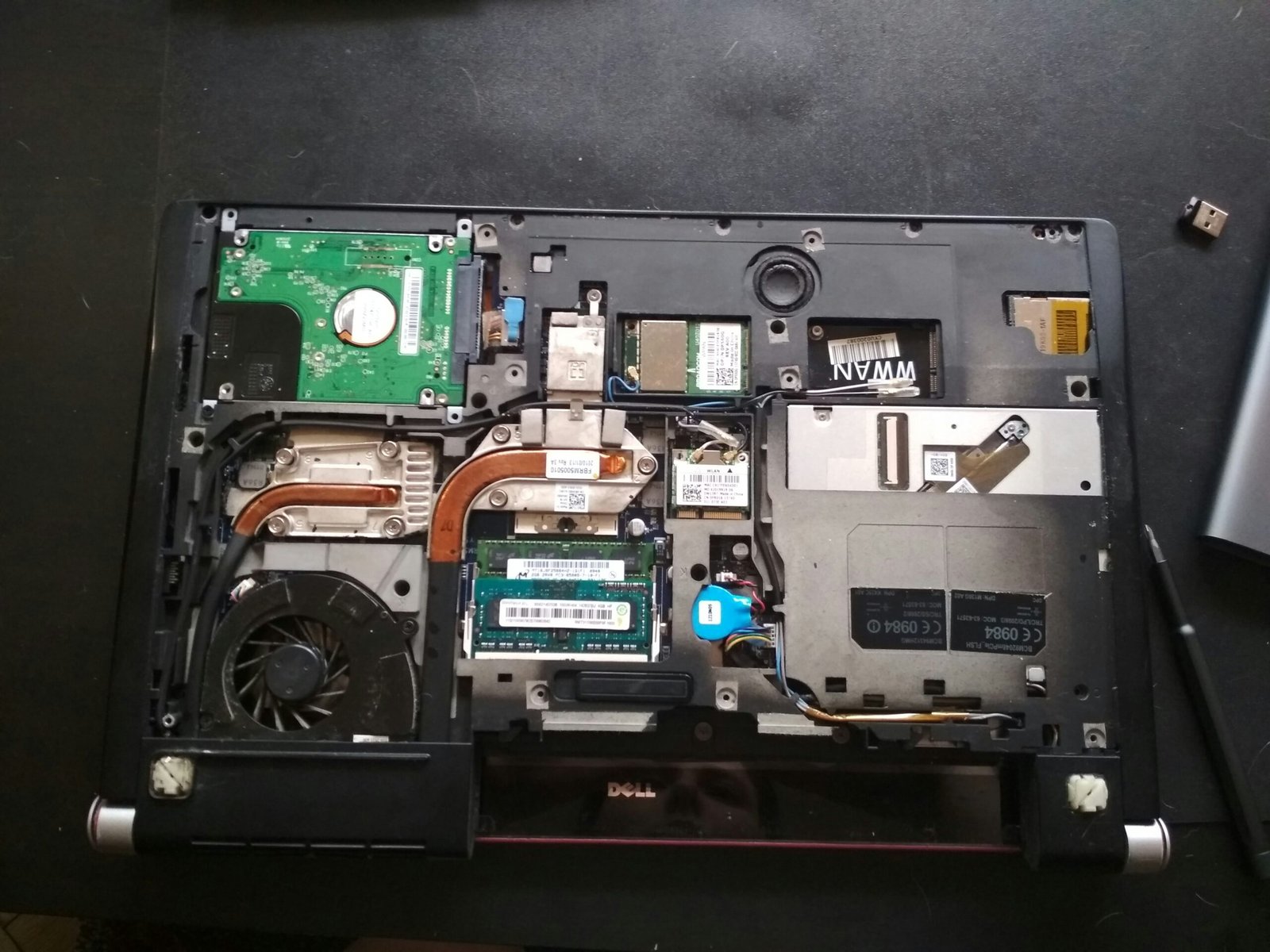
Introduction to Blockchain Technology
Blockchain technology is a revolutionary digital framework that facilitates secure and transparent transactions across a decentralized network. At its core, it is a distributed ledger system where data is recorded on numerous computers, or nodes, instead of being stored on a single centralized server. This decentralized nature is what sets blockchain apart from traditional systems, where a central authority manages and verifies transactions.
The term “blockchain” derives from its structure, which consists of interconnected blocks of data. Each block contains a record of multiple transactions, and once added to the chain, the information is immutable, meaning it cannot be altered or deleted without consensus from the network participants. This feature enhances trust among users, as modifications to the data are highly unlikely and easily detectable.
One of the key principles of blockchain technology is its ability to provide transparency. Every participant within the network can access the entire history of transactions, ensuring that all actions are accountable. This level of transparency is particularly beneficial in industries such as finance, supply chain management, and healthcare, where data integrity is essential. For instance, when a product is shipped from one location to another, blockchain allows all stakeholders—manufacturers, retailers, and consumers—to verify the authenticity of the product at every stage of its journey.
Another crucial aspect of blockchain technology is its reliance on cryptographic techniques to secure data, making it an appealing choice for safeguarding sensitive information. These techniques help ensure that only authorized users can access or modify the data, thereby preventing fraud and unauthorized access. As blockchain continues to evolve, its potential applications extend beyond cryptocurrencies to include smart contracts, digital identities, and even voting systems, promising a wide range of benefits across various sectors.
How Does Blockchain Work?

Blockchain technology operates as a decentralized and distributed ledger system, where data is stored across multiple nodes, ensuring transparency and security. Each transaction executed on the network is grouped into a block. These blocks are sequentially linked to create a chain, hence the term “blockchain.” The integrity of the blockchain is maintained through the use of cryptographic hashing, which transforms transaction data into a fixed-size string of characters. This hash acts as a unique identifier for each block, enabling any alteration in the content to be easily detectable.
To add a new block to the blockchain, the network employs a consensus mechanism that ensures all participants agree on the validity of transactions. There are several consensus models, including Proof of Work (POW) and Proof of Stake (POS). In the POW system, miners compete to solve complex mathematical problems, and the first one to succeed is allowed to add the block and rewarded with cryptocurrency. This process not only validates transactions but also secures the network against malicious attacks.
Moreover, blockchain technology can incorporate smart contracts—self-executing contracts with the terms of the agreement directly written into code. These contracts automatically enforce and execute the agreement once predetermined conditions are met, allowing for a trustless environment where parties can transact without intermediaries.
Each block in the chain contains a timestamp and a reference to the previous block, forming an immutable ledger. This structure guarantees that all transactions are transparent and traceable, which is a core feature of blockchain technology. The combination of cryptographic security, consensus mechanisms, and the decentralized nature of the network forms the backbone of how blockchain works, making it a revolutionary technology with various applications across industries.
Examples of Blockchain Technology
Blockchain technology has rapidly gained traction across various industries, driven by its potential to enhance security, efficiency, and accountability. One of the most notable applications of blockchain is in the realm of cryptocurrencies. Bitcoin, the first and most widely recognized cryptocurrency, operates on a decentralized blockchain that facilitates secure peer-to-peer transactions without the need for intermediaries. This innovation has revolutionized the financial landscape by providing users with greater control over their assets while reducing the risk of fraud.
Beyond cryptocurrencies, blockchain is making significant inroads into supply chain management. Companies are leveraging blockchain to improve transparency and traceability throughout their supply chains. By storing data on a distributed ledger, stakeholders can track products from their origin to the final consumer. This level of visibility not only helps in reducing counterfeit goods but also enables companies to identify inefficiencies and respond swiftly to any disruptions. Retail giants are increasingly adopting this technology to gain a competitive edge in a market that demands accountability and authenticity.
Healthcare is another sector where blockchain is proving invaluable. The secure storage and sharing of medical records on a blockchain can enhance data privacy while allowing authorized personnel immediate access to critical patient information. This advancement not only streamlines processes but also improves patient outcomes by ensuring that healthcare providers have access to accurate and up-to-date medical histories. Furthermore, the use of blockchain in clinical trials can facilitate greater data integrity and transparency, thus enhancing trust in the results produced.
In addition to these examples, blockchain has the potential to transform other industries such as finance, real estate, and even voting systems, illustrating its versatility. Each application showcases the practical benefits of blockchain technology, pioneering a future where security and operational efficiency are paramount.
Blockchain Technology in Cryptocurrency
Blockchain technology serves as the foundational framework for Cryptocurrencies, playing a critical role in their creation and operation. At its core, a blockchain is a decentralized digital ledger that records transactions across multiple computers so that the recorded transactions cannot be altered retroactively without the intervention of the network. This characteristic is essential for maintaining the integrity of Cryptocurrencies such as Bitcoin and Ethereum.
When a user initiates a transaction using cryptocurrency, such as sending Bitcoin to another user, that transaction is broadcast to a network of computers known as nodes. These nodes validate the transaction by ensuring that the sender has sufficient balance and that the transaction signature is correct. Once validated, the transaction is grouped with others into a block. This block is then added to an existing chain of blocks in a linear, chronological order, creating a permanent and transparent record of the transaction. This process not only tracks the ownership and transfer of Cryptocurrencies but also mitigates the risk of fraud and double-spending.
The security provided by blockchain technology is one of the most significant aspects contributing to the popularity and adoption of Cryptocurrencies. Each block in the chain is linked to the previous block via Cryptographic hash functions, making it exceedingly difficult to alter any information within the chain without affecting all subsequent blocks. This transparency and security are critical in fostering trust among users and encouraging engagement in the cryptocurrency market.
Furthermore, smart contracts are another aspect of blockchain technology that enhances the functionality of Cryptocurrencies like Ethereum. These self-executing contracts automatically enforce and execute terms of agreement between parties without the need for intermediaries. This feature not only streamlines transactions but also expands the potential applications of ryptocurrencies beyond mere transfers of value.
Educational Resources on Blockchain Technology
Blockchain technology is rapidly evolving, making it essential for individuals keen on understanding its intricacies to locate credible educational resources. There are numerous avenues available, ranging from comprehensive PDF guides to engaging online courses, all tailored to cater to varying levels of expertise. For beginners, introductory guides provide foundational knowledge, explaining basic concepts such as decentralization, consensus mechanisms, and cryptographic security. These resources often include illustrations and examples that demystify the complexity of blockchain.
One widely recommended resource is the “Blockchain Basics” PDF guide, which covers core topics in a reader-friendly format. This document serves as an excellent starting point, offering insights into blockchain’s operation and potential applications across different sectors. In addition to PDFs, many learners prefer interactive learning experiences. Online platforms like Coursera and edX offer professional courses developed by universities, perfect for those looking to dive deeper into topics such as smart contracts or blockchain development.
For more advanced users, technical presentations in PowerPoint format could be instrumental. Resources like the “Blockchain Technology Overview” PowerPoint presentation present a detailed analysis of blockchain protocols, scalability issues, and interoperability, enriching the user’s understanding of current challenges and innovations within the field. Additionally, reputable organizations such as the Blockchain Research Institute provide whitepapers and case studies, diving into real-world applications and showcasing how various industries are leveraging blockchain technology to improve efficiency and transparency.
In summary, the plethora of educational resources available ensures that learners, regardless of their expertise level, can grasp the nuances of blockchain technology. By leveraging these materials, individuals can enhance their knowledge and skills, ultimately contributing to their ability to engage with this transformative innovation effectively.
Blockchain Technology in Banking
The introduction of blockchain technology has initiated a revolutionary shift in the banking sector, altering traditional paradigms and enhancing various operational aspects. Financial institutions are now leveraging blockchain to achieve improved efficiency while concurrently reducing transaction costs. The decentralized nature of blockchain enables faster transactions without the need for intermediaries, which significantly accelerates the clearing and settlement processes, a critical factor in banking operations.
One of the most compelling advantages of blockchain technology is its enhanced security. By utilizing cryptographic algorithms and a distributed ledger, blockchain offers a higher level of security against fraud and unauthorized access. This increased security contributes to greater customer trust, an essential element in financial services. Customers can engage with banks knowing their transactions are securely recorded and verifiable, thus fostering a sense of transparency that is often lacking in conventional banking systems.
Numerous case studies highlight the successful adoption of blockchain solutions across the banking and financial services industry. For instance, JP Morgan Chase has launched its own blockchain-based platform, Quorum, which is designed to facilitate secure and efficient transactions. Similarly, banks such as Santander and UBS have explored blockchain for simplifying cross-border payments, enabling customers to conduct transactions with reduced fees and faster processing times. These implementations not only showcase the versatility of blockchain but also emphasize the potential for significant cost savings in operations.
As financial institutions continue to explore the possibilities offered by blockchain technology, it becomes evident that its transformative impact on banking is profound. The ongoing integration of blockchain into banking operations serves to redefine the way institutions operate, ensuring that they remain competitive while fostering innovation. Through improved efficiency, security, and customer trust, blockchain technology is poised to reshape the future landscape of banking.
Simplifying Blockchain: What is Blockchain in Simple Words?
Blockchain technology can be likened to a digital ledger or record-keeping system that captures and stores information securely. Imagine a notebook shared among several friends, where each friend writes down every transaction or meeting they have. Once a page is filled, it gets locked, meaning no one can change the information on that page, but everyone can still view it. Each page represents a ‘block,’ and together they form a ‘chain,’ hence the name blockchain.
At its core, blockchain serves as a decentralized record where data is stored across many computers instead of a single location. This decentralization enhances security, as there is no central authority that can manipulate the data. Every participant on the network holds a copy of the entire ledger, ensuring transparency. If someone attempts to alter a transaction, it would become evident because other copies would still contain the original information. This feature makes blockchain highly reliable for various applications, including financial transactions, supply chain tracking, and more.
To further illustrate, consider a public library. Each time a book is borrowed and returned, it gets recorded in a catalog. This catalog is accessible to everyone, allowing them to see exactly who borrowed which book and when. In blockchain, the book represents data or transactions, and the catalog illustrates the shared ledger. By using this analogy, it becomes easier to grasp the fundamental purpose of blockchain technology: retaining an accurate and immutable record that all members of a network can trust without the need for a central authority.
Future of Blockchain Technology
As blockchain technology continues to expand its reach, multiple trends and developments emerge that signal its potential transformation across various sectors. The anticipated evolution of blockchain is poised to influence diverse fields such as governance, supply chain management, and digital identity verification, going well beyond its initial application in finance and technology. Emerging trends include increased regulatory clarity, cross-industry collaborations, and advancements in scalability solutions, which will facilitate broader adoption and integration of blockchain within existing infrastructures.
One significant challenge is ensuring the security and privacy of data utilized within blockchain systems. As organizations explore the implementation of decentralized networks, they must also navigate complexities such as data governance and compliance with regulatory requirements. The development of privacy-centric solutions, such as zero-knowledge proofs, has the potential to address these concerns, fostering greater trust in blockchain applications. In addition, industry-specific partnerships could enhance the robustness of solutions by leveraging combined expertise and resources.
Moreover, the incorporation of blockchain in digital identity systems presents a notable opportunity. With the growing emphasis on privacy and data ownership, individuals may increasingly seek control over their personal information. Blockchain enables this by providing verifiable credentials that can be securely managed, reducing the risk of data breaches and identity theft. This shift towards decentralized digital identity solutions can empower users while simultaneously reducing the burden on centralized authorities.
In conclusion, the future of blockchain technology is bright, teeming with potential developments that promise to reshape governance, identity management, and beyond. By overcoming prevailing challenges through innovative solutions and fostering collaborative ventures, blockchain can usher in a new era of transparency and efficiency across diverse sectors, ultimately benefiting society at large.
Conclusion
In summation, understanding blockchain technology is vital as it continues to reshape various industries by offering transparency, security, and efficiency. The insights gathered from the previous sections illustrate the fundamental principles of blockchain, such as decentralization and immutability, which distinguish it from traditional technologies. These characteristics empower industries to enhance their operations and improve trust among stakeholders. From finance to supply chain management, the applications of blockchain technology demonstrate its potential to streamline processes and foster collaboration.
Furthermore, awareness of the implications of blockchain extends beyond merely recognizing its present state. As the landscape of blockchain technology evolves, continuous learning about emerging trends and innovations is crucial. Engaging with this subject not only broadens one’s knowledge but also prepares individuals and organizations to leverage the opportunities that blockchain presents effectively. The ongoing advancements in blockchain-related solutions, like smart contracts and decentralized applications, signal an exciting future where businesses can operate more efficiently and securely.
As blockchain continues to penetrate various sectors, it is essential for readers to remain informed about the latest developments and industry practices. This commitment to understanding blockchain serves as a foundation for adapting to the inevitable changes that this technology will introduce. By staying engaged and participating in discussions surrounding blockchain innovations, individuals can contribute to a more informed society, equipped to utilize this transformative technology. Ultimately, the journey of understanding blockchain technology is one that requires exploration and curiosity, helping to unlock its full potential in the years to come.








